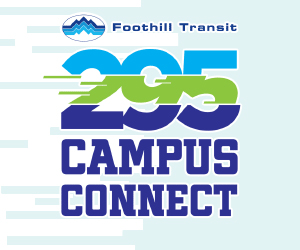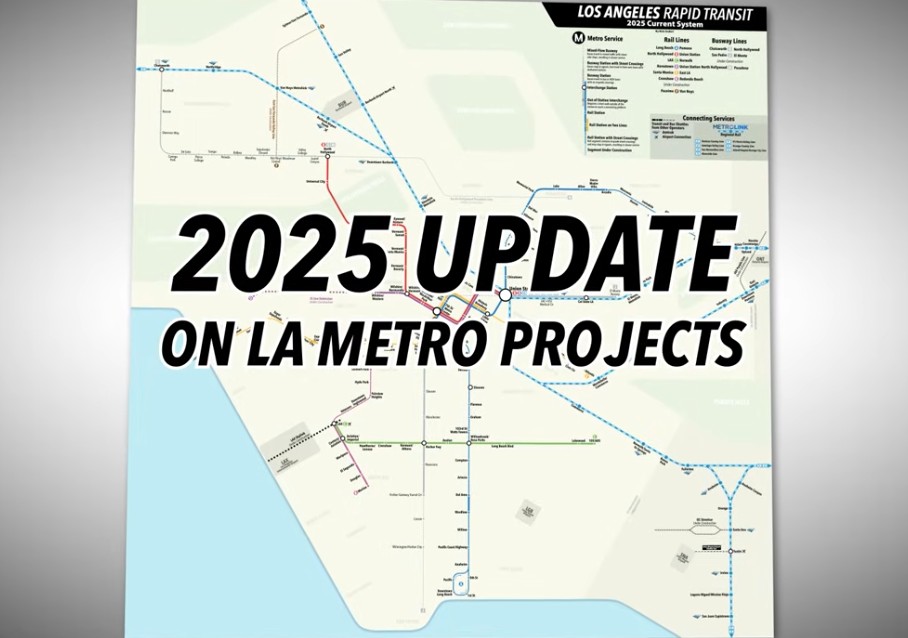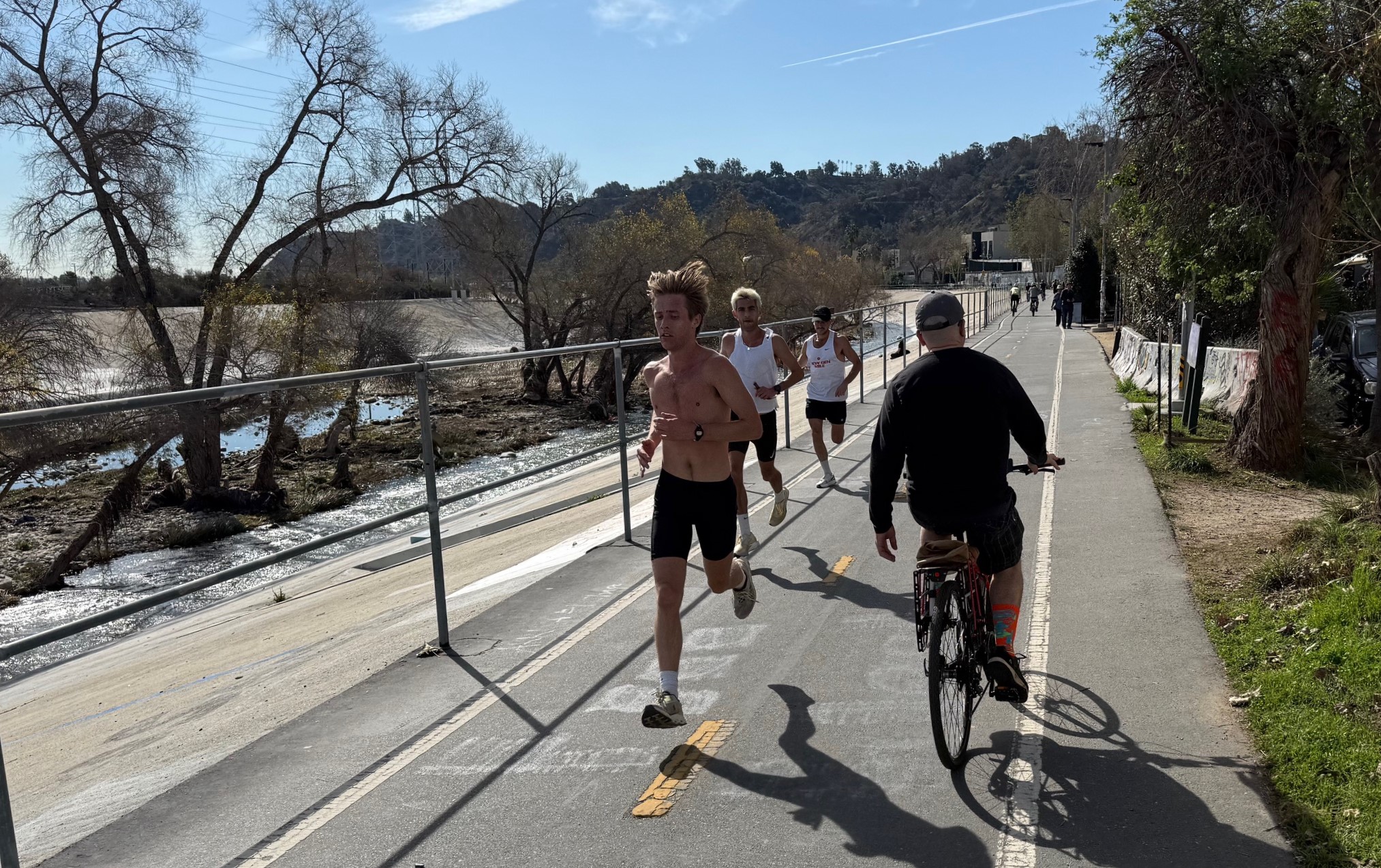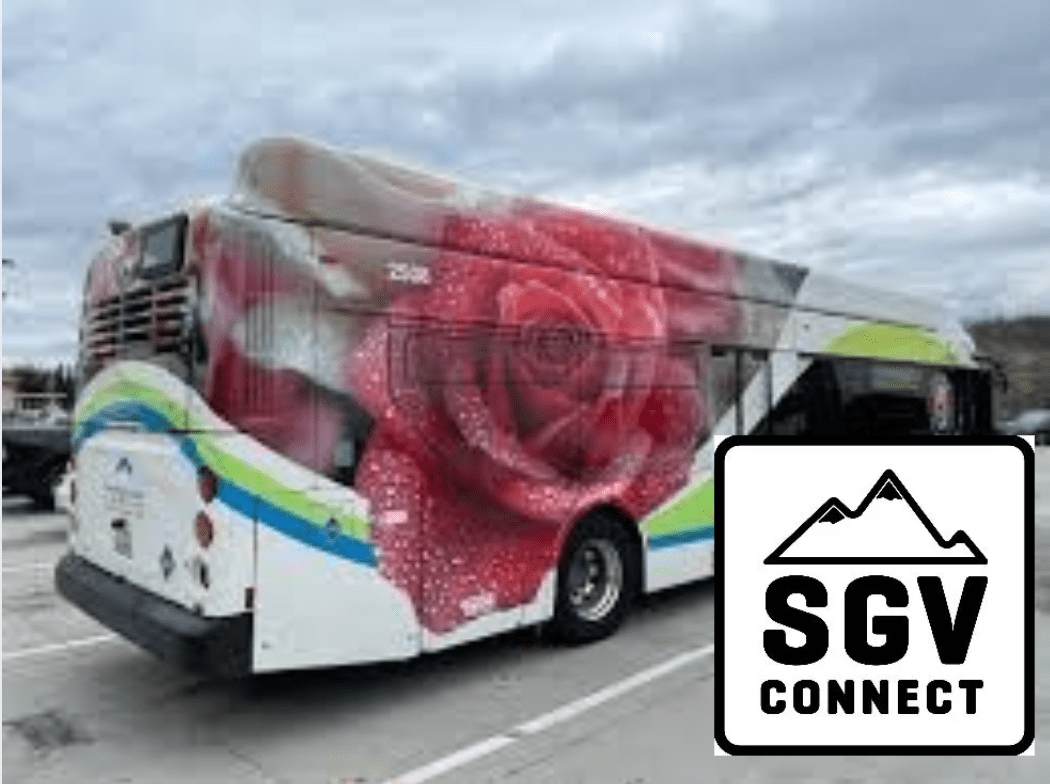This week’s SGV Connect features a pair of interviews by Damien Newton. Don’t worry Chris fans, the next podcast has a two Chris Greenspon interviews.
The first interview this week is with Felicia Friesema, the Director of Marketing and Communications for Foothill Transit. Friesema tells all about the Foothill Transit coverage changes that took place this month. Of course, the SGV bus agency had to retool routes to best serve new A Line stations that opened in Glendora, San Dimas, La Verne, and Pomona; and Foothill also debuted a new bus line, Line 295, to serve Cal Poly Pomona and Mt. San Antonio College (Mt. SAC). A transcript of that interview can be found below the podcast embed.
The second interview is a rebroadcast of last week’s StreetSmart podcast from Streetsblog California. The episode features Transform CA’s Zack Deutsch-Gross breaking down the recently concluded legislative session. To listen to that episode by itself, or for a transcript of the interview, click here.
SGV Connect is supported by Foothill Transit, offering car-free travel throughout the San Gabriel Valley with connections to the new Gold Line Stations across the Foothills and Commuter Express lines traveling into the heart of downtown L.A. To plan your trip, visit Foothill Transit. “Foothill Transit. Going Good Places.”Sign-up for our SGV Connect Newsletter, coming to your inbox on Fridays!
Damien
We’re here with Felicia Friesema from Foothill Transit. There have been a few big changes since the last time we talked—outside of the regular route adjustments—especially with the… I was going to say Gold Line.
Am I allowed to say “Gold Line” here?
Felicia Friesema
Not anymore, dude. It’s the A Line.
Damien
When I’m with the Construction Authority, they still let me call it the Gold Line.
Felicia
Well, because “Gold Line” is still in their name.
But yeah, it’s the A Line now.
Damien
Fine. The new “A Line” stations opened, and you also launched a new bus route. Let’s start there. What can you tell us about the 295? It opened last week.
And while it serves a Gold Line—uh, A Line—station…
I’m going to let people in on something Chris Greenspawn knows well: I mess this up in our ad copy at least once a month and we have to re-shoot it.
Felicia
(laughs)
Damien
So if you ever hear Chris say, “Why don’t you read that ad copy, Damien?” It's usually because I’ve already messed it up. Anyway, you launched a new bus line serving an A Line station, but you opened it before the A Line station opened. Tell us about Route 295.
Felicia
Yes! Congratulations to us. I’m really happy about it. Line 295 is one of our shorter lines—it only serves three stops.
It runs between San Dimas Station, Cal Poly Pomona at Temple, and the Mt. SAC Transit Center. Service is Monday through Friday, 6 a.m. to 7 p.m., with 20-minute intervals.
We opened on the 15th to introduce people to the new line. We honestly didn’t expect much ridership at first—and we were proved wrong very quickly.
On the first day alone, we had over 200 rides. We weren’t expecting that at all, which means we’ve got a lot of non–light rail-oriented riders on that line.
Damien
Just to be clear: you weren’t expecting ridership on day one until the rail station opened, right?
Felicia
Correct—thank you for clarifying that, Damien. We weren’t expecting ridership to really kick in until the A Line opened on the 19th.
We started the service early to get a sense of traffic patterns, especially on Temple between Cal Poly and Mt. SAC. That area can get pretty hairy at certain times of day when school’s in session. We wanted to see how the schedule would run.
Little did we know it would become really useful to a lot of people right away. And then, of course, ridership picked up again when the Gold Line—see, I just did it—
Damien
(laughs)
Felicia
—when the A Line opened on Friday.
Damien
This line mostly serves the college campuses. You’re expecting students, professors, and people accessing the campus from farther away. It’s not quite a first-mile/last-mile connection—it’s a bit longer than that—but it’s both a rail connector and a local route now.
Felicia
Exactly. Cal Poly Pomona and Mt. SAC have long been commuter campuses. Cal Poly does have dorms, but a significant number of students drive or take transit from far away—some from downtown L.A., some from Fontana.
Having a smooth, easy transit option is definitely a plus for them.
Damien
As my kids get older, we’re starting to look at colleges for my son, who’s a sophomore. We’ve heard: don’t sleep on local schools. People undervalue them—especially if they’re used to traveling for college.
I live in West L.A. and have heard plenty about people commuting to Cal Poly Pomona. I’m not as familiar with Mt. SAC—my kids’ interests don’t line up with their specialties—but I’ve already noticed the rail connection. My kid (or I) would only have to transfer twice to get there by train instead of driving.
Felicia
Exactly.
Damien
The big transportation story in the San Gabriel Valley right now is the four new A Line stations that opened on Friday. Joe did a Streetsblog story about it. We’re going to go out and ride it together soon.
How does this impact what you do? It’s not just providing connections to stations—you’ve probably got some bus lines that can be almost replaced by rail. I imagine it’s a lot of work every time a new station opens.
Felicia
It is, but it’s good work. When the A Line—then the Gold Line—first started opening in the San Gabriel Valley, we had one line across the Foothill corridor called the 187.
We’ve since split that into the 187 and 188, with Azusa as the midpoint. We thought we’d lose significant ridership along that corridor when the A Line opened…
And—see, I’m going back and forth, too.
Damien
Yeah, it’s not easy.
Felicia
Gold Line for history’s sake; A Line for now.
Anyway, we found that while travel patterns changed, our ridership wasn’t heavily impacted by the opening of the Gold/A Line.
Splitting the 187 into two lines also improved schedule adherence. We learned some people needed to get into Pasadena and others into Claremont, so having a transfer in the middle made the line more efficient.
We still watch the area very closely.
That earlier experience became our blueprint for how service might be affected by these new stations. We’re not anticipating major shifts, but we’re keeping a close eye on it.
We’ve also worked to get our service closer to the stations for first-mile/last-mile connectivity. For the most part, it’s just another great way to make sure people are getting on transit.
Damien
There’s a post on your website—we’ve been linking to it in the SGV Connect newsletter. It’s literally foothilltransit.org/article/foothilltransit-and-metrorail. It shows all the connections to the various stations for people who want to access them.
And your website always does a little extra—like highlighting local businesses around the stations. I always appreciate that.
Felicia
Yes.
Damien
So it’s probably too early to see how 295 has been impacted by the station opening. Friday was a special day, then you had a weekend. We’re recording this Monday the 22nd—the second weekday the line and station are both open.
Any interesting early observations from the A Line stations and your transit service?
Felicia
Yes, actually. We’re very excited about this and keeping track of where ridership is growing. Fridays are usually low ridership days—people take off early or make it a three-day weekend.
But we had really solid ridership on the 295 out of San Dimas Station the first day the A Line was open. We expect that number to grow. We’re partnering heavily with the schools and relying on a lot of word of mouth.
We’re also looking at how other lines are impacted. It’s hard to tell exactly how much ridership is shifting because you can’t always tell if a boarding is from the street or a transfer from the A Line.
We’re sending people out to make sure connections are smooth and to help riders with questions. These are still early days, but we’re keeping close tabs.
Damien
I was talking to a friend over the weekend—he’s in the industry—and he suggested I ask: Do you think these new stations will mean more overall ridership, or less on the bus lines?
I always assumed people would ride the train instead of the bus. His hypothesis is that you’ll more than make up for that with people who weren’t riding transit at all but will now ride the train and need the bus for the last leg.
Felicia
I think in the short term, yes. With something like this, you have to take a long view.
Our surveys consistently show: the more transit service is available and frequent, the more people ride—period.
Any new transit service—more connectivity, more frequency, more access—is good for all transit. In the short term, there may be some shifts as travel patterns change.
But long term, anything that makes transit more familiar, accessible, and easy to use is good across the board.
Damien
All right. Any closing thoughts, or anything I didn’t ask that you think listeners should know?
Felicia
Just one thing about the La Verne Station. We’ve seen a lot of chatter about accessibility—specifically about having a stop closer to the station or buses going directly into the station.
Unfortunately, they weren’t able to make the adjustments needed for a proper bus turnaround. We were hoping they could. The Construction Authority is turning the project over to Metro, so it’ll be in Metro’s hands going forward.
We’ll partner with them to make it more accessible. For now, bus service will be across the street rather than directly in the station.
Damien
I did notice on the map that there’s a new stop on the 197 significantly closer than the previous ones.
Felicia
Correct.
Damien
But the hope is you’ll be able to go directly into the station in the medium-term future?
Felicia
Correct.
We’ll say the “hopeful” future.
Damien
Obviously it’s not happening next month, but hopefully Metro can make that fix reasonably soon.
Felicia
We hope.
We hope, we hope. But yes, we’ve adjusted the line as much as possible to make it more accessible.
Damien
All right. Thank you so much for your time. We usually do an end-of-year check-in around November or December—let’s plan on that.
Felicia
Those are fun. Let’s make it an AMA.
Damien
Oh, we could do that. That’d be fun.
Felicia
Yeah, let’s do an AMA. I loved the last one we did.
Damien
I always like when people send me questions anonymously, even though you and I can almost immediately guess who sent them.
Felicia
For sure. We know you guys. We do.
Damien
Anyway, thank you so much for this. We’ll check in again. I’ve gotten more interested in how bus and rail work together—after watching the last Gold Line extensions and even locally with the Expo (excuse me, E Line) here—how that impacted Big Blue Bus and Metro Bus service. I started as a bike guy, but this has become fascinating to me.
Felicia
Yes, come to the dark side, Damien.







